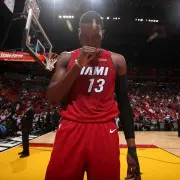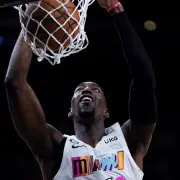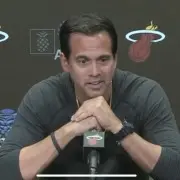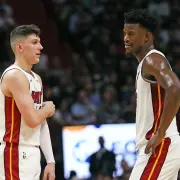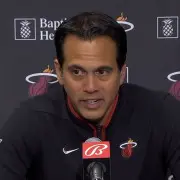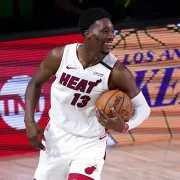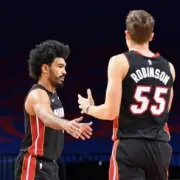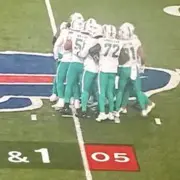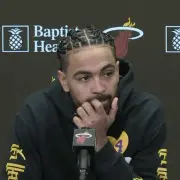The Bam Adebayo disrespect only helps Miami
Every time I open up my Twitter app it’s filled with casuals comparing him to whoever scored more points than him that night.
I’ve had enough.
As if that’s not aggravating enough, it appears that ‘points per game’ Twitter is a microcosm of how (too) many NBA fans actually think. It’s the sole reason why Adebayo can’t be seen inside the top 10 for frontcourt All-Star votes. Kyle (Pink Sweater) Kuzma and Paolo (18-29) Banchero have more votes than him for crying out loud.
This sickness doesn’t stop with points either. The same argument can be applied to any other stat.
Take the Defensive Player of the Year race for example. Bam is the anchor for a top 5 defense and is the most versatile defender in the league. He makes guarding 1-5 look effortless at times.
Apparently, that doesn’t matter. Outside of Heat fans and media, you won’t hear anyone make the case for Bam. Those finalists are awarded to the players who average the most blocks per game.
(While we’re on the topic: ‘Points per game’ Twitter or “*insert stat* per game’ Twitter is reserved for only the most casual of casual NBA fans. It is the holy grail of casual. If you ever want to tell someone you don’t watch NBA games without telling them, just start your argument with per-game averages.)
End of rant.
Whichever way you slice it, Bam is often overlooked. And as frustrating as it is, it’s exactly what the Miami Heat need.
Don’t get me wrong. I absolutely want Bam to be celebrated for his elite on-court play. As a matter of fact, his lack of recognition and accolades is the inspiration behind this piece.
But among all of the disrespect, a new Bam is unlocked. It’s a Bam with a chip on his shoulder. And it’s dangerous for the rest of the league. The disrespect fuels him. It ignites a fire on the court that can’t be contained.
That’s exactly what happened in Tuesday’s win over the Celtics. With Miami’s offense continuing to struggle from three (and every spot on the court for that matter), Bam took things into his own hands.
He dropped 30 points and 14 rebounds on 12-22 shooting (21 points and 12 rebounds in the second half) and willed Miami to a win without Jimmy Butler.
Possession after possession, he carried Miami’s offense while anchoring their defense. Elite.
In his post-game press conference, he was asked if making an All-Star statement on national television was on his mind: “No, not really. It was the rivalry. They booted us from the Eastern Conference Finals last year”, Adebayo said.
While some of that may be true, I’m not buying it as the sole reason for his aggressiveness.
To get a real glimpse of Bam’s mentality on Tuesday, we need to shift our focus to seconds after the final buzzer sounded. With sweat dripping off his face, TNT’s Jared Greenberg closed the post-game interview by saying “hopefully we’ll see you in Salt Lake in just about a month.”
Bam responded by saying, “I should be in Salt Lake”. A direct contrast to his mentality and comments when asked by the media.
He wasn’t done.
Shortly after, he spoke to Anthony Chiang of the Miami Herald. Bam didn’t hold back:
“There are guys that shouldn’t even be on that list”, he stated.
“But it’s fan voting. That’s what it is and you got to live with that. I mean, right now I’m in a position where it’s based off the coaches in the East. Now that, I’m going to be [upset] about if they tell me somebody else has played better than me this year considering I’m leading the NBA in paint points and I’m one of the reasons why we’re winning. So for me, it’s just that fan voting is fan voting. I’ll let that be. But when it comes to coaches voting, that’s when I feel like I deserve to be in it.”
Go off, Bam! Call them out. This isn’t passive. This is cut-throat talk from a max player.
Regardless of how many times he plays it cool, Adebayo cares. He feels the disrespect. And when he feels disrespected, you get Tuesday night’s stat line.
That’s exactly what this team needs; an aggressive Bam.
Miami is 20-10 in games where he shoots at least 15 shots.
To all the casual fans, coaches, and players – continue to fade Bam all you want. It only makes the Miami Heat dangerously potent.
******
For more exclusive Heat coverage, sign up for Off the Floor!
